‘Mysterious Circle Appears in Joe “Boy” Conboy’s Back Garden’
I was sitting in the common room of Kirwan House Tourist Hostel in Wexford, having just completed a radio interview to promote my book on Ireland. As I turned the page of the South East Voice newspaper this headline jumped out at me. I read on. It told how local man Joe had awoken one morning to find this mysterious circle. Many theories were suggested by other locals, (the most comical being from a farmer who claimed to have been incarcerated by Martians for eleven hours and warned that they were up to their old tricks again. Part of me couldn’t help wondering if this was inspired by one too many pints of Guinness.) However, one suggestion really caught my eye:
It was the work of the fairies.
The year was 2003, and it was the fifth year I had been to Ireland. In that time I must have notched up a total of two years spent travelling or living in this country. I knew it well, or so I thought.
I recalled reading a similar story somewhere else, and remembered that the occupant of the house refused to remove this fairy ring, even though it was simply made of leaves. Despite these newspaper stories being written with a tongue in cheek undertone, it seems that locals still have a strong belief in some of these ancient myths. I suddenly realised something I had overlooked in all my years of coming here, Ireland has a magical and rich ancient history.
I had come to this country at a time when I badly needed inspiration. Deep down I knew that Ireland is revered as a magical place, and is known affectionately as the Emerald Isle. During these five years I fell in love with the country, its people, its music and the wonderful atmosphere it exuded.
As I sipped my coffee I began to think more about this side of Ireland. It’s a land aglow with stories, ancient myths and legends: from fairies to leprechauns, from the ancient gods to the legendary giants. Many stories of great battles and magical tales have their origins here, and many are famous around the world.
It was becoming evident that I had experienced many wonderful things in this green land, yet this, the most significant part of Ireland, I had overlooked. It was time to put that right.
The Dawn of Time
8000 years BC possibly saw the first humans arrive in Ireland via the land bridge created at the end of the last ice age. These were Mesolithic hunter-gatherers who lived mostly along the waterways. They were followed by the Neolithic people who are believed to have been the creators of Ireland’s 1200 megalithic tombs, the most famous and certainly the most remarkable being the burial chambers of Newgrange and Knowth in County Meath.
Ireland’s history was defined by a series of invading tribes. Little is known of these mysterious people, and only legends exist. Some were Iron Age warriors originating from Eastern Europe. The most noteable were the Tuatha Dé Danann, which translates as the People of the Goddess Danu. Legend says they were a tall fair-haired race who believed fervently in the supernatural and in an afterworld known as Tír na Nóg (Land of Eternal Youth). Other notable tribes were the Parthalóns, Formorians, Fir Bolg, Nemedians and the Milesians. These warrior races fought successive battles, and although they never left any written history, they left behind them a legacy which was spread orally and told in words and song. Naturally these tales were embellished along the way and now give rise to some of Ireland most famous mythical tales and legends. Many of the tribes most famous warriors were elevated to the status of giants.
Celtic mythology is divided up into four distinctive cycles: the Mythological Cycle, the Ulster Cycle, the Fenian Cycle and the Historical Cycle.
Wexford
Although I didn’t need an excuse to go travelling around Ireland, it certainly helped to have one. So I decided that before I returned home I would take one last journey around Ireland in search of some of these ancient legends. Of the four provinces that divide up Ireland’s thirty-two counties, Leinster is the largest containing twelve counties. It pretty much covers the south east of the country, including Wexford where I was now.
Wexford is the county town and the first major town you hit after arriving in Rosslare on the ferry. In the old days Wexford’s harbour was a bustling port and thus the town has a thriving history as well as an alarming number of pubs, even for an Irish town. There is no shortage of nightlife, and the main street is awash with bars, restaurants and cafes. Wexford’s narrow streets are a reminder of its Viking past and are lined with many old houses.
Sunny Southeast
This part of Leinster is known as the Sunny South East. And it’s not just a name given to mislead people into coming here, it really does get the most sun of any part of Ireland. In a country noted for its rainy weather, this is a blessed relief. And if this isn’t enough, then the county’s coastline boasts some of the most stunningly long golden beaches in the country, rivalled only by County Donegal in the Northwest. The difference here is you are more likely to get the weather to enable their enjoyment.
Wexford Harbour
Wexford’s large harbour attracted many races throughout history. The Gaelic name for Wexford is Loch Garman, and local legend tells of how Garman Garbh was drowned on the nearby mudflats by flood waters released by an enchantress. The resultant lake was named Lake of Garman (Loch Garman). Much of Wexford harbour is still very shallow, and a large portion of it has been reclaimed to build the front section of the town and the lovely quays. Despite not being the bustling port it once was, Wexford harbour is still a popular fishing port, and boat trips can be taken out in the harbour or up the River Slaney.
Kilkenny
I had business to take care of in Kilkenny, so I headed off there first. I was travelling in a little Bedford Midi camper conversion that I affectionately refer to as the Scooby Van. This is because when I first bought it I couldn’t help thinking that it looked a bit like the Mystery Machine. Somehow, on this trip to discover Ireland’s mysterious past, it seemed all the more poignant. It also meant that having so much room, it was often used to give people lifts. In this case I was joined on the journey to Kilkenny by an Italian girl who couldn’t speak a word of English.
The road to Kilkenny is a particularly attractive one. It takes you along the River Nore and through the little village of Inistioge where original shop and pub fronts are still prevalent. Unfortunately the bus doesn’t go this way.
During an interview here on Radio Kilkenny once, I was berated by the DJ for referring to Kilkenny as a town in my book, Hot Footing around the Emerald Isle. Kilkenny is in fact a true city, due to its large medieval cathedral, named after St Canice who founded a monastery here in the 6th century. This, however, is probably not the first thing that will jump out at you. Instead you will not fail to notice Kilkenny Castle, first built in 1172 and eventually sold to the city in 1967 for the whopping sum of £50. Despite their favourable deal, the council still deem it necessary to charge you for entry into the castle. But a stroll around the castle’s lovely gardens is free. Kilkenny is possibly one of the most attractive towns in Ireland with its narrow streets lined with old fashioned shop fronts. The Kilkenny Arts festival in August each year is a particularly good time to visit.
After I took care of my business I then headed off on my adventure.
Finn McCool - The Famous Giant of Ireland
I drove up through Carlow and Athy. Only the month before I’d passed through this region on a 300-mile solo hike for charity. While going from Rathangan to Edenderry I’d taken the old bog road that passed through the Bog of Allen. Little had I known at the time that this region was home to one of the many stories surrounding Ireland’s most legendary mythical giant, Finn McCool (Fionn Mac Cumhail). In the writings of Patrick Kennedy it is said that Finn had a great fort here in the Bog of Allen, where he would spar with his warrior friends or pitch big stones twenty or thirty miles off to make a quay for Dublin Harbour.
It was here that Finn first got word that the Scottish Giant Far Rua was making his way across the great stepping stones from Scotland to the north of Ireland. He’d heard of the great Finn McCool and wanted to see who is the best man. So far Finn had lived to be a middle-aged man and never once had he met his match. However, he’d heard tell that Far Rua was a much bigger man than he and so devised a plan.
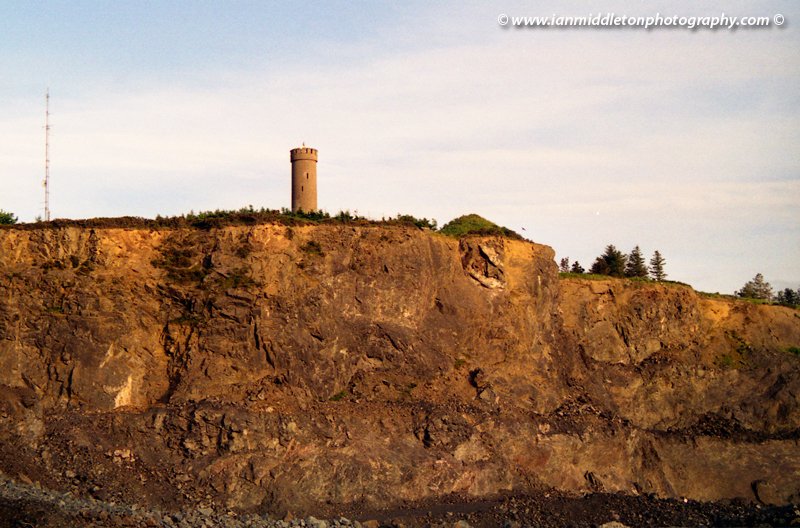
When the Scotch giant arrived he was told that Finn was off hunting stag in Killarney, but Finn’s wife Grainne invited the giant in for tea and served him a griddle cake with the griddle itself inside. But, unbeknownst to Far Rua, a round piece had been cut out of one side. The Scotch giant took a bite and lost three of his teeth. ‘This is a hard diet you give your family,’ he said. ‘Oh, lord love you,’ she replied. ‘The children here think nothing of it. Let us see if the infant would object.’ So she takes the cake over to the cradle, where Finn had disguised himself as a baby. Finn took a bite of the part where the piece was taken out of the griddle.
The story ends with the Scotch giant leaving with a vow to return one day soon. However, like most legends there are various versions of a particular story and the most popular version of this one lies further north at the Giants Causeway in County Antrim. So I would have to investigate that one when I got up there.
Goddess Brigid to Saint Brigid
The little county town of Kildare isn’t much to look at, but its claim to fame is that it is the location of a monastery supposedly established by one of Ireland three best loved saints, St. Brigit, in the 6th century. A protestant cathedral named after her now lies in its place. At 33 metres the 10th century round tower in its grounds is the country’s second highest.
The town’s surrounding area contains many Neolithic sites like standing stones and hill forts. Unfortunately I arrived too late to go inside, and had to make do with viewing the church from outside its large solid stone wall.
Stories of Ireland’s Patroness seem to blend with those of the ancient Celtic goddess Brigit; a triple goddess of fertility, healing and poets. Her symbol is fire, and this blends well with the story of how Brigit’s fire was kept alive from the fifth century by vestal virgins in the monastery in Kildare, and protected by the nuns until the twelfth century. The restored fire pit can be seen in the grounds of the church today.
The legend of the goddess Brigit says she was the daughter of the Dagda. The Dagda mór mac Eladan, to use his full title, is the chief of the Celtic gods. The Dagda is the greatest of all the gods. He is referred to as a good god, but not in the sense of good or bad, but meaning he is good at everything. The Dagda is a powerful wizard, his special sense being the power of knowledge; knowledge of what was to come or what was hidden. Some accounts also say that Brigit married King Bris, of the Formorians.
The Boyne Valley
It was very late by the time I arrived in Slane, Co. Meath. Slane is a little village I have visited many times. Despite Slane being a name that most people would recognise, it’s nothing more than a crossroads with a few pubs, B&Bs and shops. Its name has been made famous by Slane Castle, host to the annual Slane rock concerts.
Slane Farm Hostel
I was first invited here by Joanne Macken who I met at the Independent Traveller’s World show in London. Joanne is the owner of the Slane Farm Hostel and gave me her card. When I next found myself in this region I stopped over for a few days. The hostel is in an old converted coach house and stables, and as disconcerting as that may sound let me reassure you that any remnants of its prior usage are well and truly non-existent: except of course that the exterior still retains its historic look and you wake up to the sound of cows in the fields out back. The farm is still a working one, and it lies just up the road from Slane Castle. As well as dorm and private rooms, there are now self catering cottages also. There is a well equipped kitchen and in the cosy lounge Joanne has supplied a wealth of literature on the history and folklore of the County Meath area.
Birth of the River Boyne
With 5000 years of history in the Boyne Valley, you could find things to keep you busy here for weeks. It’s even possible to get involved with an archaeological dig in the area. Information can be obtained from the Slane hostel.
The birth of the River Boyne has its roots in an ancient legend known as the Well of Sergais. It’s said that a long time ago when the Gods walked the earth there was a well shaded by magical hazel trees bearing crimson nuts. It was believed that whomever should eat these nuts would be graced with the knowledge of the world. The nuts fell off the trees and into the well, and were eaten by the vividly coloured salmon who swam there. For this reason they became known as the salmon of knowledge. This well was owned by the God Nechtain, who was very possessive of the well. Only he and his three cup bearers were allowed anywhere near the well. But one day his wife, referred to as Boann or Boínn (meaning she who has white cows; white cows were considered cows of the otherworld), was overcome with curiosity one day and went to the well without Nechtain’s permission or knowledge. There are various stories as to what she did there, but whatever it was resulted in the well overflowing and gushing forth onto the surrounding countryside and forming the Boyne Valley.
The Well of Sergais is known today as Trinity Well and lies in the grounds of Newberry House, in the village of Carbury, County Kildare. Every year on the first Sunday of June, locals gather for the annual Rosary.
Hill of Tara - The Ancient Capital of Ireland
This area is the capital of ancient Ireland and principle attractions here are the magnificent passage tombs of Newgrange, Knowth and Dowth (Just a few miles from Slane), and the Hill of Tara, seat of the ancient high Kings, which lies just south of Navan.
My last visit to Newgrange hadn’t gone all that well. My companion and I had arrived late (something I seem to be in the habit of doing) at the visitor centre. There are tours available, but it was too late in the day, plus I believe in the expression, ‘why pay when a little leg work means you can view it for free.’ Little did I know at the time that this isn’t possible.
We walked out to Newgrange anyway, but could only view it from the fence. We then took a leisurely stroll back to the visitor centre, only to find a very angry man waiting for us.
‘Is dat your van in de car park?’
‘Yes, it is,’ I replied.
‘Do ye not tink dat some of us want to go home?’
‘Jesus, I’m sorry,’ I said, cowering slightly. ‘We lost track of time.’
‘Where have ye been?’
‘We went to Newgrange.’
‘And why’d you not take the bus?’
‘We felt like walking. What time do you close here then?’
‘Seven o’clock. I have to lock the gates, ye know. Some of us like to go home at de end of de day. I was going to call de police.’
It was eight o’clock.
‘I’m sorry,’ I repeated.
‘Where do ye work?’ he asked.
I was thrown slightly by this question. ‘I’m a travel writer,’ I replied, hoping this news might temper his furious onslaught in the hope I might not give the park a bad write up.
‘And do ye not have to worry about time in yer line of work?’
Well, that hadn’t worked then.
‘Sorry,’ I repeated, beginning to grovel now.
I didn’t know what else to say. I couldn’t argue with him because he was right, we had been foolish and inconsiderate. We should have noted the closing time before setting off on our trek. So therefore I had nothing to offer in our defence other than to grovel and apologise, and thank him for staying back and letting us get back to our van, when by rights he could well have locked the centre and park up and left us stranded for the night.
Having noted on this previous trip that it was possible to drive out to the monuments, I decided the next morning to do just that. But upon arrival I was informed that entrance was only permitted via the tours from the visitor centre.
‘It’s a royal heritage park and protected,’ said the guy at the counter. ‘Admission is by guided tour only. It’s very busy this time of year, and the next tour isn’t until after two.’
I wasn’t having much luck really, was I?
This wasn’t for a few hours yet, so I decided to head off to Tara first.
Getting to the Hill of Tara
To get to Tara from Slane I just had to head off to Navan on the N51 that follows the River Boyne, then head south on the N3 for a few miles until I saw a signpost for Tara and turn right. The hill of Tara was just a short way up this road. I pulled up in the car park and wandered in. At the entrance is a protestant church. I noticed a sign indicating a price, and feared for a moment that I would have to pay to enter the grounds. I paused briefly, hand clutching my heart, the other clutching my wallet. Fortunately, this was not the case. Further investigation proved this to be the cost of the visual presentation being shown in the church itself. I wiped my brow in relief and continued up the steps and through the stile and soon found myself standing on a green hill seriously devoid of monuments. In the distance I could see a single stone standing on a large earthen mound, and just across to my right was a small mound with a sign that read:
Mound of the Hostages.
As I wandered over a group of children came running past, the little girl shouting, ‘Mummy, I want to see the Fairies!’
Modern archaeology credits these manmade mounds as passage tombs, built by the Neolithic people in order to bury their dead. These tombs are significantly placed in order to coincide with the rising of the sun and the full moons of the ancient festival times.
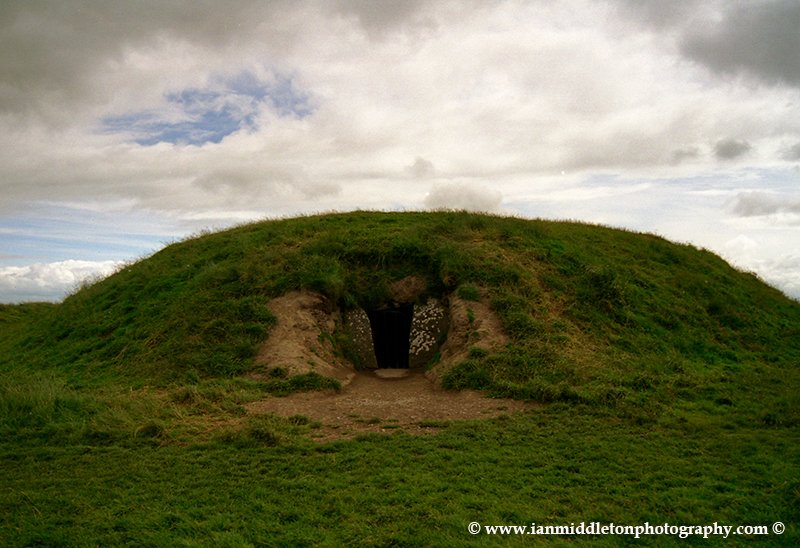
Once the children had been dragged away by their mothers, I took a look inside through the locked gate. Entry was forbidden. Inside was a small passage measuring seven feet long. On the left side I noticed a large stone slab decorated with the many symbols that have become synonymous with the Boyne Valley. At 3000BC this is the oldest mound at Tara. However, these passage tombs also feature significantly in legends as the home of the Fairy Folk. But where did the Fairies come from?
Tara appeared little more than an insignificant hill with nothing but grassy mounds and depressions. It was obvious that little remains visually of its past. But I was soon to learn that this little hill lies at the heart of Ireland’s ancient history and if it could talk it would have one hell of a story to tell.
Back on the road outside the entrance to Tara I saw a small building with a sign out front that read: Maguires. I wandered in to find a souvenir and bookshop with a small café out back. I browsed in the bookshop and bought a small booklet called The Druids at Tara by Michael Slavin. As I wandered outside I turned to the back and saw a black and white illustration of a tree with the following caption underneath:
The Fairy Tree at Tara
Immediately I wandered back in and asked the lady at the counter where it is. She directed me to walk up to just before the entrance to the church grounds and then turn right and walk over the hill to the other side.
Far over the hill I found a single hawthorn tree at the bottom. There was no sign indicating it was a fairy tree. I wandered around looking at other areas but still found nothing. I then returned to the first tree and compared it with the illustration. It seemed to fit. Upon return to Maguires the lady asked me if I’d found it.
‘I think so,’ I said. ‘Was it the one sitting at the bottom of the hill?’
‘That’s the one,’ she replied.
‘But there was no sign indicating it’s a fairy tree.’
‘Oh no, there wouldn’t be.’
‘How do you know it’s a fairy tree then?’
‘Well, you know, it’s just one of them things that the locals have always known,’ she said. ‘Was there anything hanging from the tree?’
‘Like what?’
‘Like pieces torn from people’s clothing, or coins stuck in the wood. The fairy trees are associated with healing. If you have an ailment then you are supposed to leave a personal item or a gift for the fairies and in return they will heal your affliction.’
‘There was nothing on it when I looked at it.’
‘Ah, they must have cleared them all off then.’ She turned to the guy working next to her. ‘Did you hear that? The fairies are after cleaning up the tree again.’
I told her that I was travelling around in search of Ireland’s legends and she produced another book by Michael Slavin called the The Book of Tara. ‘Michael is a local man,’ she said. ‘He’s a lovely old man who knows everything there is to know about Tara. Unfortunately he’s not here on Wednesdays, otherwise you could have met him.’
This was a shame. I bought the book and, as I still had time before my Newgrange tour, wandered back to the van and read some of it.
Although only 155 metres in altitude, Tara dominates the Meath lowlands and overlooks much of Ireland. Its strategic position made it the Royal Seat for the High Kings who ruled over Ireland. Tara is the focal point of Ireland’s story, her shaping and her national symbols, the Harp and the Shamrock, all have their origins here. To look at it, you would hardly believe this to be true.
Tara is the basis for a series of legends that chart the successive invasions of Ireland. These legends are told in the Book of Invasions written down in various sections by the monks from 1000 to 1300 AD.

The first to arrive were the Parthalóns, who defeated an evil sea faring race called the Formorians. The Formorians inhabited the northern region of Ireland (The north was always associated with evil in Celtic Mythology). But soon after their victory the Parthalóns were struck down with the plague and all died.
The Nemedians came next, also having to fight the Formorians. Only thirty of them survived the battle and Tailtiu, the daughter of the Nemedian King, married Eochaid Mac Erc of the Fir Bolg, who were next to take Tara.
The Fir Bolg had five chieftains who divided Ireland up into five provinces: Meath, Leinster, Ulster, Connaught and Munster. Meath was the central province and Tara the royal seat. The province was later to merge with Leinster.
The next wave of invaders are by far the most infamous, the magical and mysterious Tuatha Dé Danann. After a fierce battle in which 100,000 of the Fir Bolg were killed, the Dé Dannan took control of Tara and thus Ireland.
The Magical of the Tuatha De Danann
The Dé Danann brought with them four magical gifts: the Lía Fáil (Stone of Destiny), Sword of Light, Cauldron of Plenty and the Spear of Victory. The Lía Fáil was the single stone I had seen on the distant mound. The stone is said to roar when touched by the true King of Tara. No man could escape the Sword of Light, and a battle would never go against the man who held the Spear of Victory. Finally, the Cauldron of Plenty would provide an endless source of nourishment.
Although powerful in magic and war, the Dé Danann proved hopeless rulers and soon their land began to slip back into the hands of the Formorians. This was aided by the Dé Danann King Breas, who was half Formorian on his father’s side. He was elected King when the current leader, Nuadhu, lost a hand in the battle with the Fir Bolg. The Dé Danann believed that their King must be unblemished. However, Breas soon proved more partial to his Formorian side and became a mean and evil King who collected tribute for the Formorians.
When Nuadhu’s hand was restored by magic Breas was stripped of his title and went into exile. Nuadhu then took his rightful place on the throne.
Gradually the Formorians re-took Tara and forced the Dé Danann into slavery under the tyranny of their leader, Balor of the Evil Eye. Balor was said to have had one eye in the middle that gleamed when he was angry and destroyed anything in its path. Soon after, Breas returned from overseas with new forces and joined the Formorians. He revealed to them the Dé Danann’s magical secrets and thus they conquered the whole of Ireland and in a raid on Tara they took with them the Spear of Victory, the Cauldron of Plenty and the Harp of the Dagda; a magical harp that could make crops grow, children laugh and enemies weaken. It became the emblem of kingship at Tara and eventually of Ireland.
However, the Dé Danann’s saviour came in the form of Lugh of the Long Hand. Lugh equipped himself with every magical weapon in the world and led the Dé Danann to a dramatic victory over the Formorians. After a fearsome encounter Lugh fought and killed the Formorian leader, Balor and the Dé Danann were victorious. They returned to Tara with the stolen items and ruled once again for the lifetime of nine kings.
Finally came the Milesians, more often referred to as the Celts. They came from Spain, and their leader was Amergin. Amergin met with the three Dé Danann Kings who were sharing the monarchy at the time and they agreed to a tournament of magic. As decided, the Milesians retreated to their ships and remained at the distance of nine waves and faced the full force of the Dé Danann’s magical power. A heavy mist fell upon them followed by giant waves. But Amergin uttered these magical words to calm the tumultuous sea:
“That they may find its plains, its hills and valleys.
Its forests that are filled with nuts and fruits
Its streams and rivers, its lakes and its waters
That we may have our gatherings and our games on this land
That there may be a king of our own at Tara.”
This is the incantation as recorded in the book of invasions. It worked and the storms subsided. The Milesians came ashore. The first battle fought was led by Eriú, wife of the Dé Danann King Mac Gréine. She was defeated and mortally wounded at a battle with Amergin at the Hill of Uisneach. Legend says that she is buried under Ail na Mireann, the stone of the divisions in County Westmeath. Amergin granted her a dying wish. He promised her that the island would bear her name forever – Eriú is the original name of Eire, which in modern Gaelic means Ireland.
The Milesians defeated the Dé Danann. It is said that the Dé Danann retreated into the otherworld of the Tír na Nóg via sacred portals in places such as Tara, Loughcrew and Newgrange. Ireland was then divided into two realms: the spiritual and the earthly. From this point on the Dé Danann were to be known as the Sidhe (Fairy Folk). They would rule in the Tír na Nóg forever, but often they would reappear to meddle in the affairs of ordinary folk; sometimes this intervention was quite favourable, other times downright destructive. The passage tombs, raths and sacred lakes became their fairy palaces. And once a year at the festival of the Samhain (Halloween) the doors would be flung open and the spiritual and earthly realms would be united.
Festivals at Tara
Imbolg
Imbolg was celebrated at the start of Spring in a town called Belper, just south of Tara at the great ritual site of Rath Maeve. Maeve is the mother goddess for Tara. This was a druid festival that celebrated the milking of the cows, the budding of new plants and generally the coming of new life.
Bealtaine
Bealtaine was also celebrated at Rath Maeve at the start of summer. The fires of the High King of Tara were lit here by the Druids to declare the start of the festival. Legend says that when St Patrick visited Tara he angered the High King Laoghaire by lighting his paschal fire on the Hill of Slane prior to the time set by the Druids at Tara. The Hill of Slane lies just to the north of the cross roads and is visible from Tara, and vice versa. It was here that St Patrick used a Shamrock to explain the union of the Father, Son and the Holy Ghost. Thus the Shamrock became the national symbol. There are the ruins of a church and 16th century Franciscan Friary on the hill now, along with a statue of King Laoghaire.
Lughnasa
Lughnasa was celebrated at the end of summer at Tailtain on the River Blackwater six miles north of Tara. Tailtain was one of four sacred places available to the High King along with Tara itself, Tlactga near Athboy and Cletty on the Boyne. This festival seems by far the biggest of all four. It included horse racing, athletic contests, philosophical debates and courtships.
Newgrange
I made my way back to the Brú na Bóinne Visitor Centre and joined my tour group for Newgrange. Brú na Bóinne is the name given to the area that is home to the three most famous burial mounds in Ireland, and means Valley of the Boyne. The three burial mounds, or passage cairns, are: Newgrange, Knowth and Dowth. The first two are the most visited, mainly because Dowth has not yet been excavated and thus entrance is forbidden. It is possible to drive yourself to it and walk around and over it, you just cannot enter the chambers.
Against my better judgement I’d had to pay just over five Euros for this tour, but as it turned out, it was well worth the money. The group was relatively small and had to be split into two when the tour entered the chamber. Our tour guide gave quite a detailed lecture that lasted nearly half an hour.
Covering an area of one acre, this magnificent monument was built around 3200 BC; 500 years before the first Egyptian pyramid and 1000 years before Stonehenge. The façade is decorated with white quartz from as far away as the Wicklow mountains. But what’s even more impressive are the giant kerbstones of which 97 mark the perimeter. They weigh anywhere from one to twelve tons, and in all 400 were used in the mound’s construction. It’s been estimated that it would take eighty men three days to move one stone three miles. Many of the kerbstones have been ornately decorated with what is now known as Boyne Valley art. So the question remains, why would anyone go to such great lengths in order to build this mound?
It’s widely assumed that Newgrange was built by the Neolithic people, and one would also assume that these people were primitive and lacked the intelligence of modern engineers. But these monuments are testament to the contrary.
The entrance is blocked by a huge kerbstone that is intricately carved with the images like those I observed inside the Mound of the Hostages. When Newgrange was first built people had to climb over the stone to gain access. When reconstructing the façade during the excavation in the 1960s a decision was reached to alter the entrance slightly to allow steps to be put in for visitors to enter the passage. Otherwise the tomb has been exactly restored to its former glory.
Not only was this burial mound an incredible feat of engineering, but it was also an incredible feat of ingenuity. The entrance is precisely aligned with the rising of the sun at the Winter Solstice; the sun would set at the entrance to the mound at Dowth. But its designers were also clever enough to realise it would have to be local dawn, and thus calculate where the sun would rise and how high. In the case of the Boyne Valley the sun would rise over the distant hills. So a roof box was fitted above the entrance for the light to shine through. The main entrance below takes you through a narrow passageway that leads uphill to an elevation of two metres higher than when you entered. The passageway is 19 metres long. Thus the floor of the inner chamber is exactly level with the roof box. On the morning of the solstice sunlight shines through the roof box and travels along the overhead passage and illuminates the inner chamber.
Once our group was assembled in the inner chamber our guide then turned off the internal lighting, then by use of a spotlight from the roof box he demonstrated how the light would illuminate the chamber. Obviously this was intended as an example, and in no way emulated the actual experience of the solstice.
When the lights were turned back on he indicated the corbelled roof. No cement or binding agents were used to fix the stones in place, and they had all been stacked like a house of cards. These ancient builders clearly realised that this was the most efficient and best form of support. The capstone is the lightest at two tons. Above that lie four metres of loose rock, then earth and grass. All this was to ensure the watertight integrity of the chamber, and to make sure that moisture will not loosen the rocks in place. All this points to the fact that these so-called primitive people really knew what they were doing.
Inside the chamber there are three recesses. In all probability the bodies were cremated outside and then the ashes placed inside the chamber. What this was for, no one really knows. There are many theories, but there is simply no way to know for sure as these people never left any written history. In truth, the race who built these tombs will always remain a mystery.
Stories of occupancy do exist though, and in keeping with the legend of the Sidhe, the story of Newgrange is that it is the home of Oenghus, the Tuatha Dé Danann’s God of Love.
After the tour we were returned to the Visitor Centre where I boarded a bus for the Knowth tour.
Knowth
Although Newgrange is the most famous, Knowth is more impressive in that its large passage tomb is surrounded by 18 smaller tombs. The main tomb has two passageways aligned with the rising and the setting of the sun at the equinox. The other difference here is that unlike Newgrange, Knowth was used for centuries after its usage as a passage tomb as a settlement right up until the arrival of the Milesians, whose local chieftain lived upon the main mound in a purpose built enclosure.
Hundreds must have died in the construction of these tombs. It’s estimated that the bigger mounds must have taken a good fifty years to construct, and given that the life expectancy of human beings back then was 30-40 years, the original architects cannot have lived to see the completion of their dreams. Whoever built these magnificent mounds, intended them to last.
Onwards to the Cooley Peninsula
That evening I continued on with the intention of getting to the Cooley Peninsula in County Louth, in order to begin the Ulster section of my trip. Having been there before I already knew of one very strange phenomenon. But when I was there before I had seen signs indicating I was on the Táin Trail. Further reading had proved this to be a very famous legend in the Ulster Cycle, and not a cycling trail as I had previously suspected.
The plan was quite simple, I would drive to the peninsula and stop in a campsite along the coast. Unfortunately my simple plan was thwarted by mechanical means. Five miles from Dundalk the van began to cough, splutter and generally emit some worrying sounds not conducive to a healthy engine.
I managed to crawl my way into Dundalk town centre and pull up in a car park. It was nine at night, the sun was going down. I was in a van with English number plates, and the large IRA slogans painted in high letters on the car park wall only served to add to my ever increasing feeling that this was not a good place to have broken down.
The Book - Mysterious World: Ireland
These travels were the start of what eventually became a travel guide to ancient Ireland. Check out the full book for a complete insight into the mysteries of ancient Ireland, and an indepth travel guide on what you can visit today:
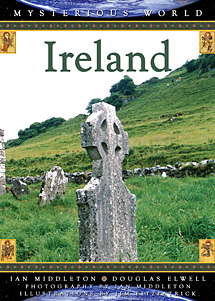









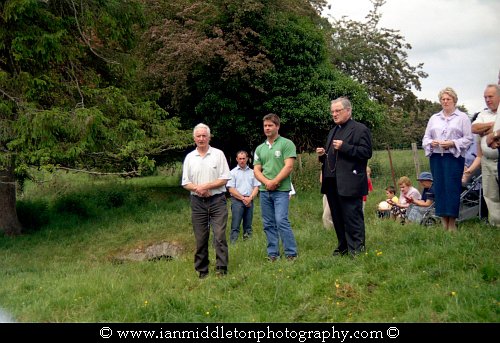
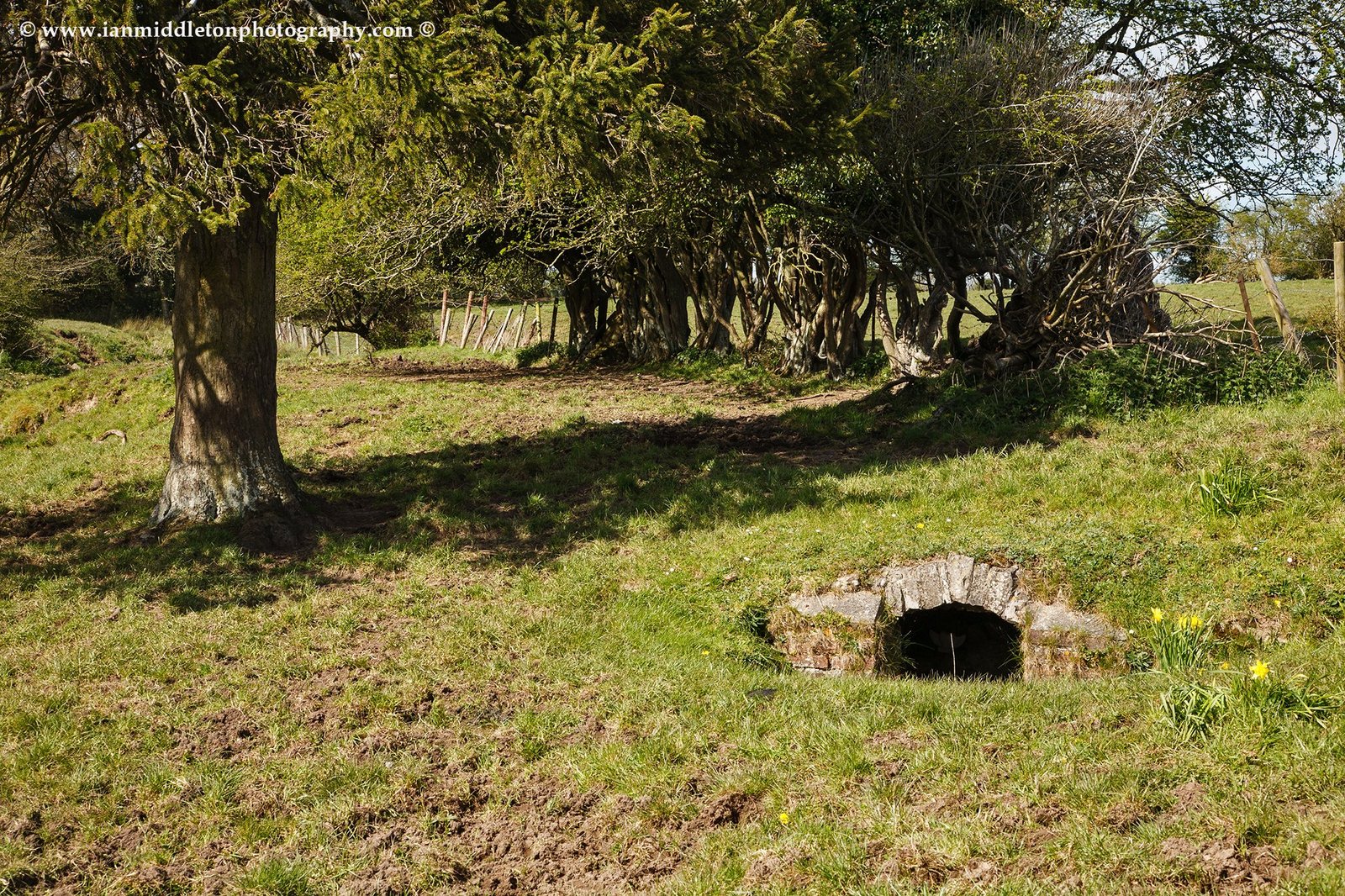
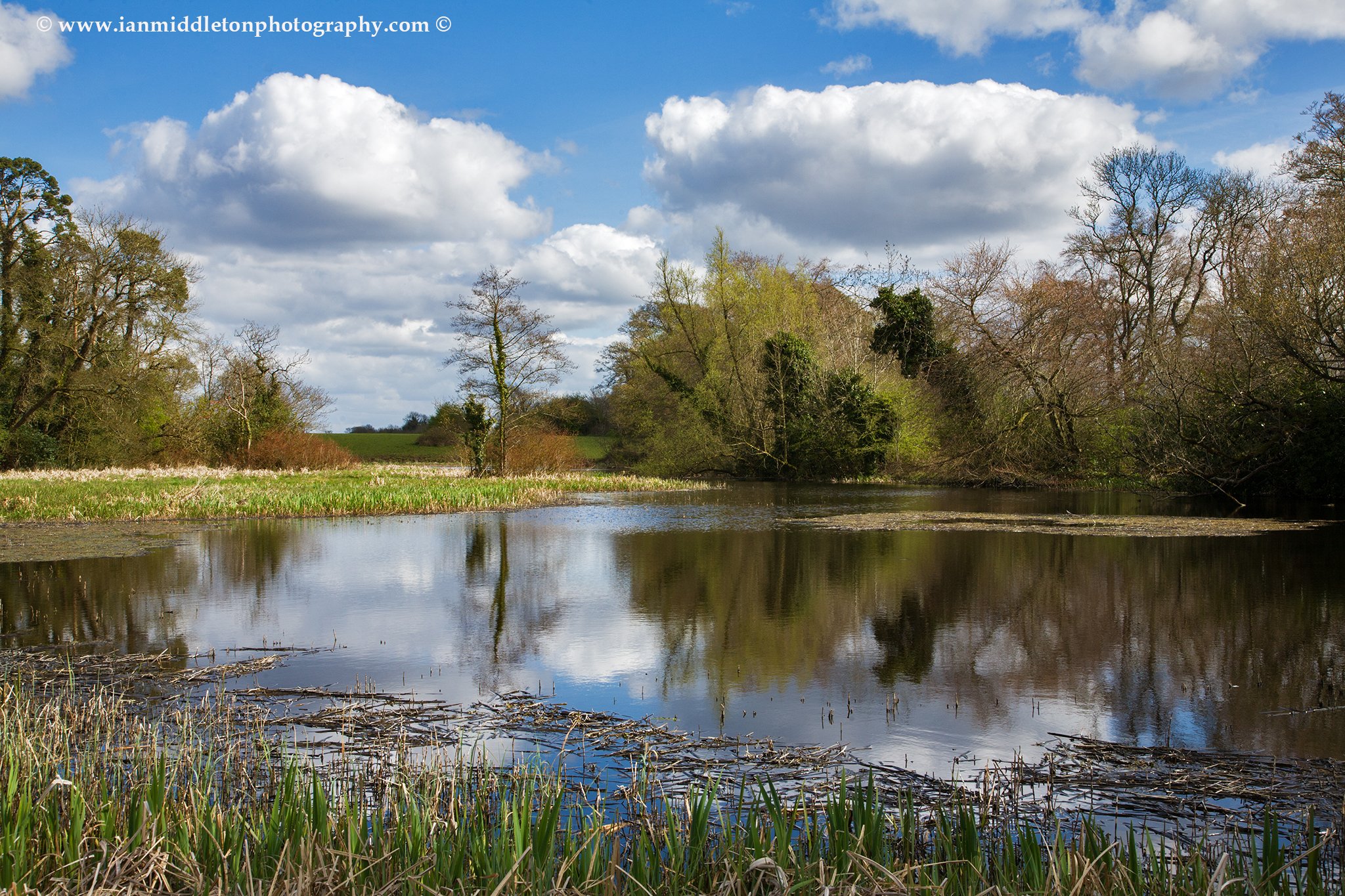
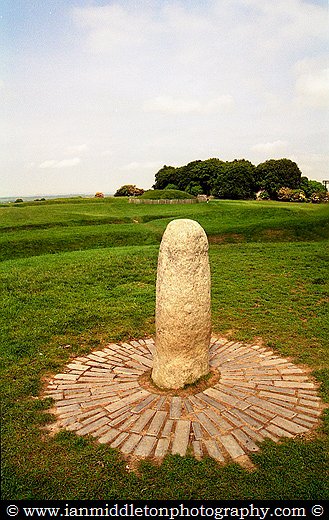
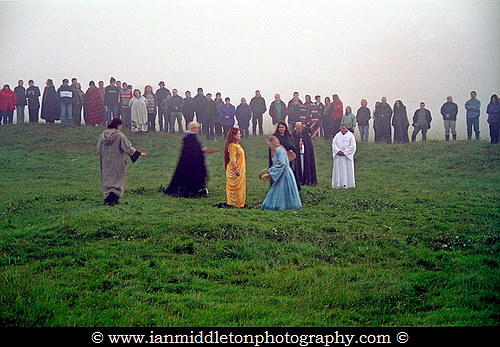



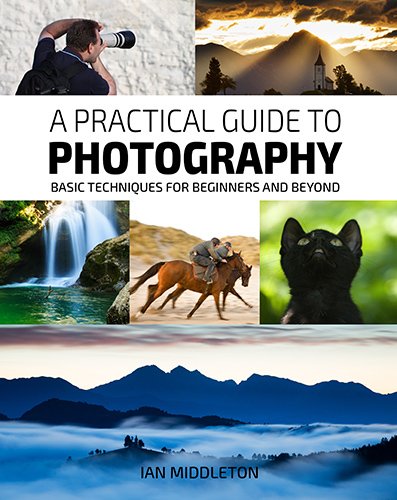









2 responses